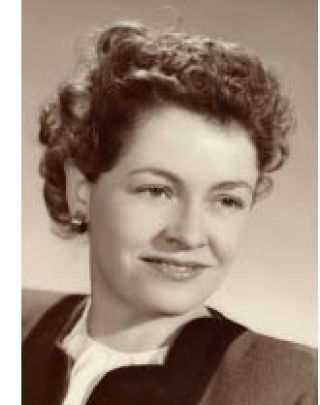We islanders are fortunate to have a delightful, new Lopezian residing in the village. Her name is Virginia Moore and she is the mother of Lopezians Michael and Pat Moore. Virginia moved to Lopez in 1992 after having visited her children here for 20 years.
Virginia was born in San Jose, California on March 3, 1918. When she was a few weeks old, her grandmother adopted her and raised her in San Diego. Virginia’s great-grandfather Charles Hardy also lived with them. Charles served with General William Tecumseh Sherman during the Civil War in Sherman’s famous March to the Sea. Virginia says her oldest daughter Kathleen is researching Charles’s experiences in the war.
“I know that when he got out of the war he was Superintendent of Public Schools in Wisconsin. He was my company and died when I was about eight. I loved him dearly. My grandmother and I didn’t get along very well. And I can understand why she didn’t get along with my mother. She was very rigid.
“My grandmother was the head of the English Department at San Diego High School. At that time a lot of kids who lived in Tijuana came to San Diego to go to school. They were really good people! Tijuana, when I was growing up, was not like it is now. There was a place called Aqua Caliente (hot springs) and it was THE place to go. There would be dog races, and I even saw Rita Hayworth dance! It was a beautiful place. Now it’s a place to stay out of. It’s really quite dangerous.”
Between junior high and high school, Virginia’s grandmother sent her to a convent school. “She was afraid I would discover boys, and I probably would have. But that’s all right. So she sent me to St. Mary’s Academy in Los Angeles. There were a lot of movie stars’ kids there that I’m sure were throw away children. It was a Catholic Convent where girls were novices and apprentices. We slept in a huge room. I’m sure my grandmother sent me there to protect me from boys. There certainly weren’t any there.
“Sister Marietta, who was so good to me even though I wasn’t a Catholic, decided that for Lent I would give up climbing over the fence to go to the bakery for cream puffs. And also swearing. Finally the Mother Superior decided I wasn’t very happy there and I’d better go home. So my great uncle Hardy, who really was like a father, came and got me. He was the dearest man. He always came through for me.
“My great uncle Hardy was the president of the Normal School. He was responsible for purchasing the property where San Diego State University is located. He was also the first president there. There is a school and a road named after him.”
After graduating from high school in 1936, Virginia was a Marston’s Girl; meaning she worked at Marston’s Department Store on 5th Avenue and C Street. A highlight of her time there was being asked by the police to go into the women’s restroom to see if a burglar was hiding there. He was, and Virginia found him. After successfully apprehending criminals, it was off to college.
“I studied fashion design at San Diego State. I always drew. For a while my grandmother sent me to study painting with Leon Bonnet. He was a very famous landscape painter. I studied under him for quite a long time. He said I’d never stick to it and I never did.”
San Diego in the 1930s was different from today’s San Diego. “When I was growing up, San Diego was a Navy town. Purely Navy. It was very safe. We went to the beach a lot. You could swim in the bay back then, off of Point Loma. My husband was a lifeguard on Coronado Island.”
Virginia met her husband Homer in the Mission Hills neighborhood where they were neighbors. They were married in 1940. Homer was a highway engineer for Caltrans and worked on the design for the San Diego-Coronado Bay Bridge. “Before the bridge was built, people commuted from the San Diego mainland to Coronado by ferry like they do here.” Towards the end of World War II, Homer was drafted but was not sent overseas.
While Homer was in the Army, Virginia says she lived on $100 a month. “Rent was $30 a month. I still have the ration books. At the end of the month we would end up eating eggs and peas. Because Homer was in the military, we got a lot of advantages. We got a loan to build a new house in El Cajon.”
A damp rental house with mold and two sick children drove the family inland to El Cajon where the weather was drier. Homer designed the home, which was surrounded by orange groves.
In 1982 they sold the house and moved to Seattle to live with Pat and her husband Alan. Homer suffered from Parkinson’s disease and Virginia acted as his caregiver for 10 years. When Homer passed away, Virginia moved to Pacific Regent in Bellevue, and then to Lopez.
Virginia recently received some good news from California in the mail. “I am a member of the Native Daughters of the Golden West. It’s a fraternal organization and I got a letter this past week that said because I’m over 90 I have the special honor of never having to pay dues again. So that’s pretty wonderful. I have a medal.”
And Lopez has a lovely new neighbor.
If you would like to suggest someone for Spotlight on Seniors please e-mail carmstrong@islandsweekly.net.




